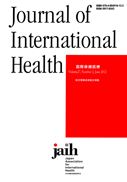Volume 27, Issue 2
Displaying 1-10 of 10 articles from this issue
- |<
- <
- 1
- >
- >|
Former Chairman’ Contribution
-
2012Volume 27Issue 2 Pages 111-117
Published: June 20, 2012
Released on J-STAGE: July 18, 2012
Download PDF (418K)
Chairman’s Contribution
-
2012Volume 27Issue 2 Pages 119-120
Published: June 20, 2012
Released on J-STAGE: July 18, 2012
Download PDF (206K)
Original Article
-
2012Volume 27Issue 2 Pages 121-127
Published: June 20, 2012
Released on J-STAGE: July 18, 2012
Download PDF (393K) -
2012Volume 27Issue 2 Pages 129-140
Published: June 20, 2012
Released on J-STAGE: July 18, 2012
Download PDF (587K) -
2012Volume 27Issue 2 Pages 141-149
Published: June 20, 2012
Released on J-STAGE: July 18, 2012
Download PDF (324K) -
2012Volume 27Issue 2 Pages 151-164
Published: June 20, 2012
Released on J-STAGE: July 18, 2012
Download PDF (723K) -
2012Volume 27Issue 2 Pages 165-170
Published: June 20, 2012
Released on J-STAGE: July 18, 2012
Download PDF (108K)
Information
-
2012Volume 27Issue 2 Pages 171-181
Published: June 20, 2012
Released on J-STAGE: July 18, 2012
Download PDF (594K) -
2012Volume 27Issue 2 Pages 183-189
Published: June 20, 2012
Released on J-STAGE: July 18, 2012
Download PDF (336K)
A report on The Prince Mahidol Award Conference 2012
-
2012Volume 27Issue 2 Pages 191-194
Published: June 20, 2012
Released on J-STAGE: July 18, 2012
Download PDF (236K)
- |<
- <
- 1
- >
- >|
